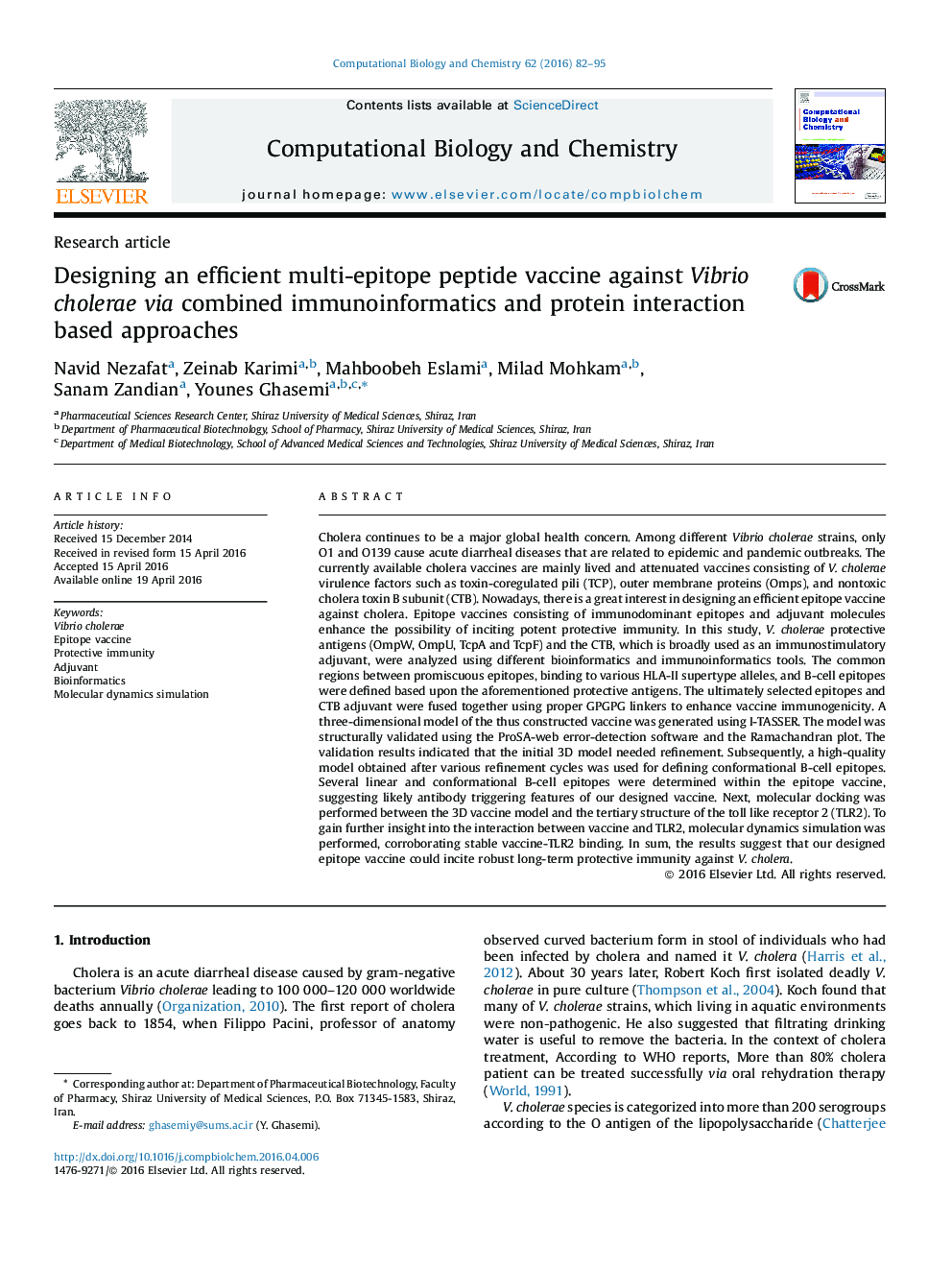| Article ID | Journal | Published Year | Pages | File Type |
|---|---|---|---|---|
| 14917 | Computational Biology and Chemistry | 2016 | 14 Pages |
•Designing epitope peptide vaccines is a novel strategy for protection against Vibrio cholerae.•The designed cholera vaccine consists of two main sections: four protective antigens (OmpW, OmpU, TcpA and TcpF) and adjuvant (CTB).•The selected epitopes and adjuvant were fused together by proper linkers in order to enhance the immunogenicity of vaccine.•In silico analysis indicates that the epitope vaccine is able to incite long-lasting protective immunity against V. cholerae.
Cholera continues to be a major global health concern. Among different Vibrio cholerae strains, only O1 and O139 cause acute diarrheal diseases that are related to epidemic and pandemic outbreaks. The currently available cholera vaccines are mainly lived and attenuated vaccines consisting of V. cholerae virulence factors such as toxin-coregulated pili (TCP), outer membrane proteins (Omps), and nontoxic cholera toxin B subunit (CTB). Nowadays, there is a great interest in designing an efficient epitope vaccine against cholera. Epitope vaccines consisting of immunodominant epitopes and adjuvant molecules enhance the possibility of inciting potent protective immunity. In this study, V. cholerae protective antigens (OmpW, OmpU, TcpA and TcpF) and the CTB, which is broadly used as an immunostimulatory adjuvant, were analyzed using different bioinformatics and immunoinformatics tools. The common regions between promiscuous epitopes, binding to various HLA-II supertype alleles, and B-cell epitopes were defined based upon the aforementioned protective antigens. The ultimately selected epitopes and CTB adjuvant were fused together using proper GPGPG linkers to enhance vaccine immunogenicity. A three-dimensional model of the thus constructed vaccine was generated using I-TASSER. The model was structurally validated using the ProSA-web error-detection software and the Ramachandran plot. The validation results indicated that the initial 3D model needed refinement. Subsequently, a high-quality model obtained after various refinement cycles was used for defining conformational B-cell epitopes. Several linear and conformational B-cell epitopes were determined within the epitope vaccine, suggesting likely antibody triggering features of our designed vaccine. Next, molecular docking was performed between the 3D vaccine model and the tertiary structure of the toll like receptor 2 (TLR2). To gain further insight into the interaction between vaccine and TLR2, molecular dynamics simulation was performed, corroborating stable vaccine-TLR2 binding. In sum, the results suggest that our designed epitope vaccine could incite robust long-term protective immunity against V. cholera.
Graphical abstractFigure optionsDownload full-size imageDownload as PowerPoint slide
